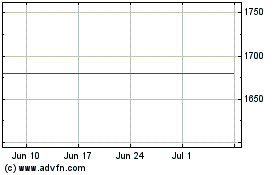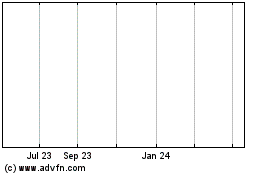By Elizabeth Koh
SEOUL--The foldable phone was supposed to flip the smartphone
industry upside down, but so far it has flopped.
Pitched last year as novel introductions to a staid industry
that has changed little over the past decade, folding phones
promised portability with displays that opened up to the size of
tablets yet when closed could still perform most functions of a
smartphone.
But just as device makers were expecting sales to surge, the
global coronavirus pandemic hit and sheared away the initial
enthusiasm. Buyers stuck at home didn't need a multifunctional
gadget on-the-go, while lockdowns closed many retail shops where
buyers could be wooed by the flashy phones up close. The economic
shocks also have left fewer people craving a high-price device.
Globally, 1.74 million foldable devices were shipped from the
first launch last September through June 30, according to market
tracker Canalys. That is a fraction of pre-pandemic forecasts and a
rounding error in an industry that shipped 1.28 billion smartphones
during the 12 months ended that same date.
The latest entrant arrives Tuesday with Samsung Electronics
Co.'s unveiling of the Galaxy Z Fold 2, the second iteration of its
flagship foldable-screen model. It has a reinforced folding hinge
and an even larger 7.6-inch main display. The price remains the
same as its predecessor's at $2,000.
The South Korean tech giant, having invested billions in
developing foldable technology, has a lot riding on making the new
handsets a success. The company kicked off the mainstream offerings
of such phones last year with the first Galaxy Fold, though it
experienced an inauspicious debut.
In April 2019, days before the Galaxy Fold was set to hit
shelves, several tech reviewers reported their test units had
malfunctioned, with screens cracking, bulging or blacking out.
Samsung delayed the release for about five months, though
criticisms remained after the relaunch. The phone-repair website,
iFixit, which had found design weaknesses with the initial Galaxy
Fold test units, noted the revamped device's additional
reinforcements but described it as still seeming "alarmingly
fragile."
Samsung, based on internal tests, claimed the Galaxy Fold could
be opened and closed some 200,000 times before breaking. But CNET,
the tech-review site, found the hinge stopped working after 120,000
folds. A Samsung spokesman declined to comment on durability
issues.
So far, Samsung has only shipped 1 million foldable-screen units
since it started selling the devices last fall, according to
Canalys, the majority of which were the company's second foldable
offering, the lower-priced Galaxy Z Flip.
Samsung now represents about three-fifths of the nascent
foldable market. Huawei Technologies Co. and Lenovo Group Ltd.'s
Motorola are the two other notable rivals, with shipments of
500,000 and 200,000, respectively, according to Canalys.
Phonemakers had expected initially modest sales for their
foldable devices, but even those forecasts have proven to be lofty.
Samsung had originally aimed for 6 million foldable shipments in
2020; halfway through the year, they have hit one-tenth that
target.
The disappointment comes at a tough time for the industry.
Overall smartphone sales slumped 20% in the first half of the year,
according to research firm Strategy Analytics. At one point, more
than half of the major telecom carriers' stores in the U.S., a key
market for premium smartphones like foldables, closed just as new
offerings like the Galaxy Z Flip and the new-generation Motorola
Razr were hitting shelves.
Huawei had to scale back the global release of its Mate X
foldable phone--launched in November and sold for $2,400--because
of a U.S. export ban that restricted its access to Google's popular
software lineup. Even in China, where the phone is available, sales
have been weak. The company has lost tens of millions of dollars on
the Mate X rollout, according to a Huawei executive's comments
reported by Chinese media.
Part of the drawback for foldable phones is the price. In an
industry where already high smartphone prices were pushing people
to delay upgrades, the sticker shock of foldable phones has
dissuaded all but the most ardent early adopters, said Shengtao
Jin, a Canalys analyst. The economic impact of the
lockdowns--millions of job losses and murky futures for
businesses--also has diminished the appeal for a typical
consumer.
Most consumers have never seen or held a foldable phone. The
inability to handle the new devices in-person at stores meant few
got the chance to see the appeal, said Tom Kang, a research
director for Counterpoint Research.
"The longer you play with the phone, the more positive you
become," Mr. Kang said.
In a July earnings call, Samsung executives blamed the pandemic
for decreased demand across the board, but said the newer
innovations with 5G and foldable devices could help stir up sales
as the economy recovers. "The market demand has started to show
signs of gradual recovery from June," said Lee Jong-min, a Samsung
vice president in its mobile unit, during the earnings call.
The Galaxy Z Fold 2 allows the use of multiple apps
simultaneously on the main 7.6-inch display. When shut, the phone
has a second, exterior display of 6.2 inches--larger than Apple
Inc.'s iPhone XR--which can be used for the typical tasks of using
most apps, texting and checking emails. Having two displays means
people being photographed can check their poses as if they were
taking a selfie of themselves. Like Samsung's other premium
offerings, the Galaxy Z Fold 2 offers 5G capability.
Write to Elizabeth Koh at Elizabeth.Koh@wsj.com
(END) Dow Jones Newswires
September 01, 2020 10:14 ET (14:14 GMT)
Copyright (c) 2020 Dow Jones & Company, Inc.
Samsung Electronics (PK) (USOTC:SSNHZ)
Historical Stock Chart
From Mar 2024 to Apr 2024

Samsung Electronics (PK) (USOTC:SSNHZ)
Historical Stock Chart
From Apr 2023 to Apr 2024
